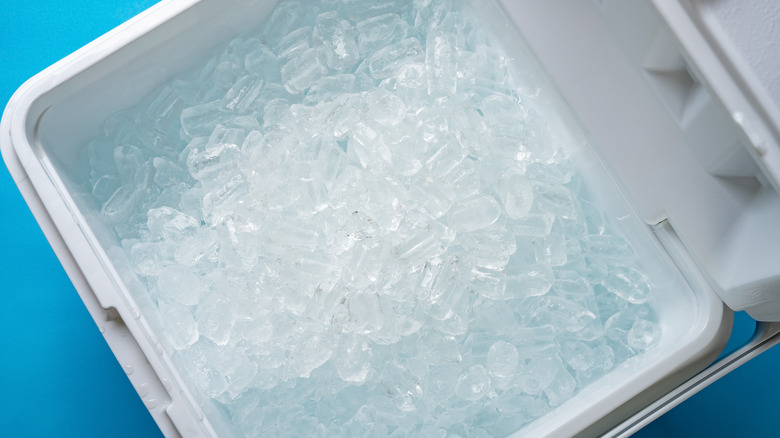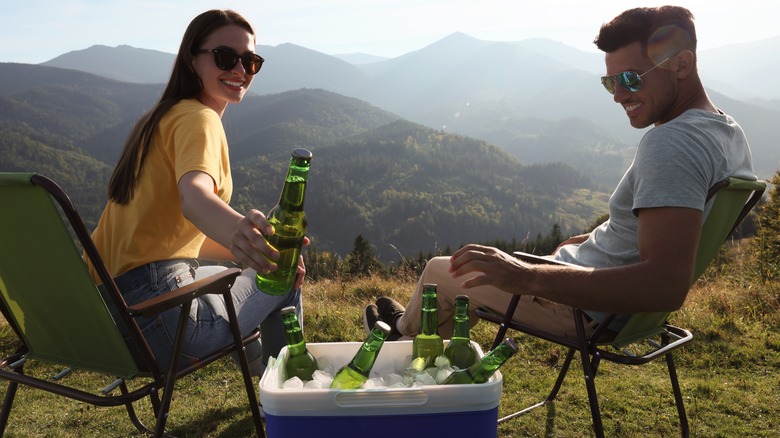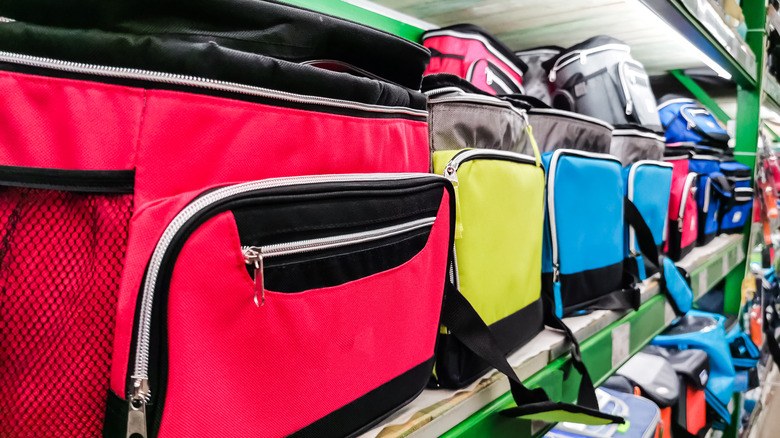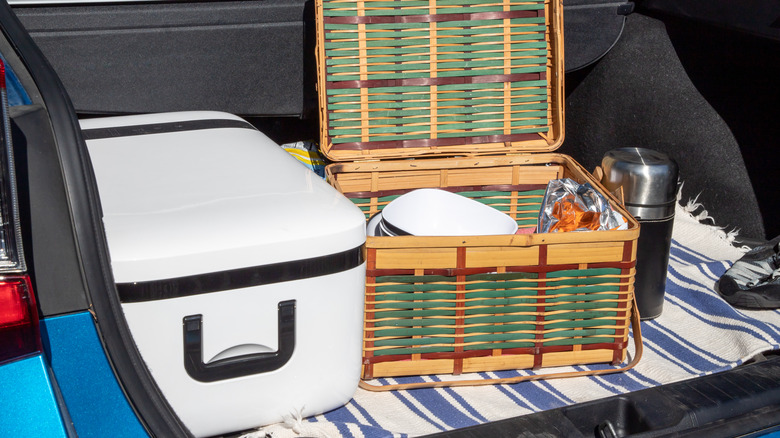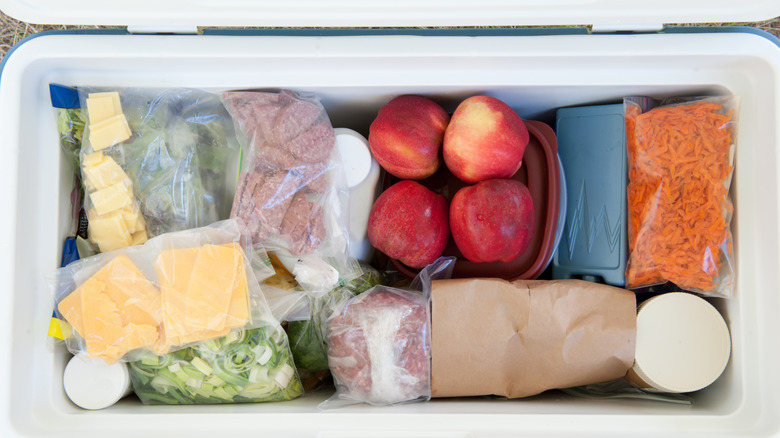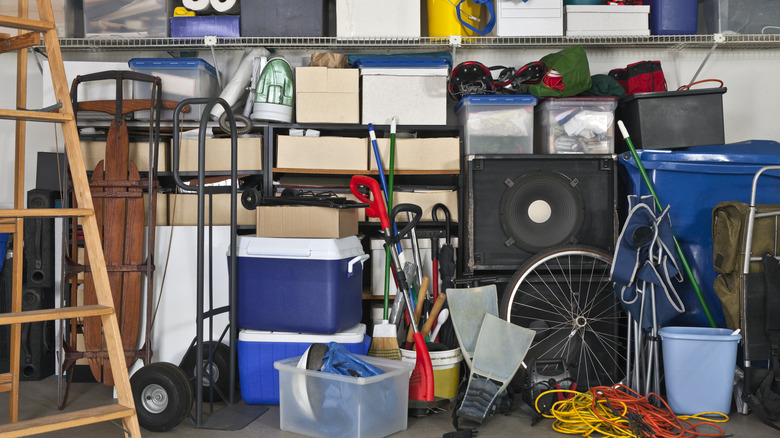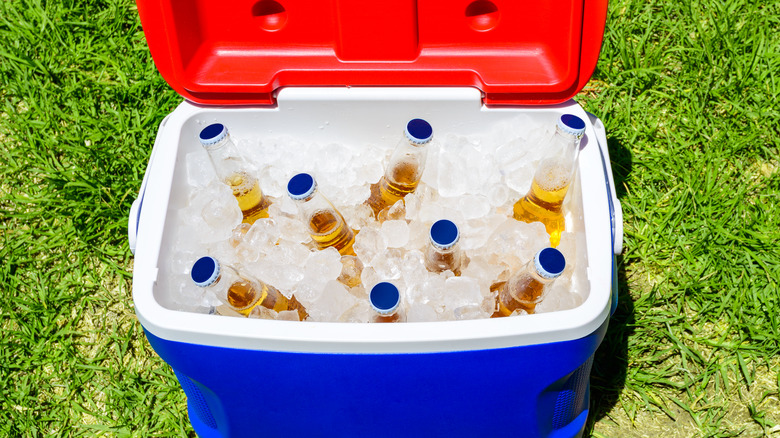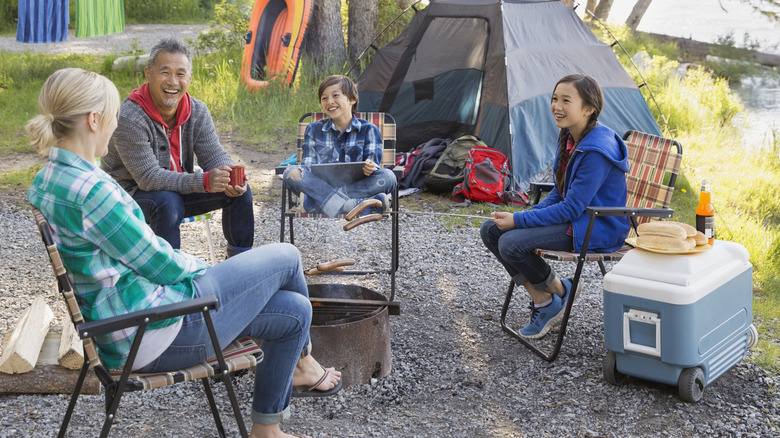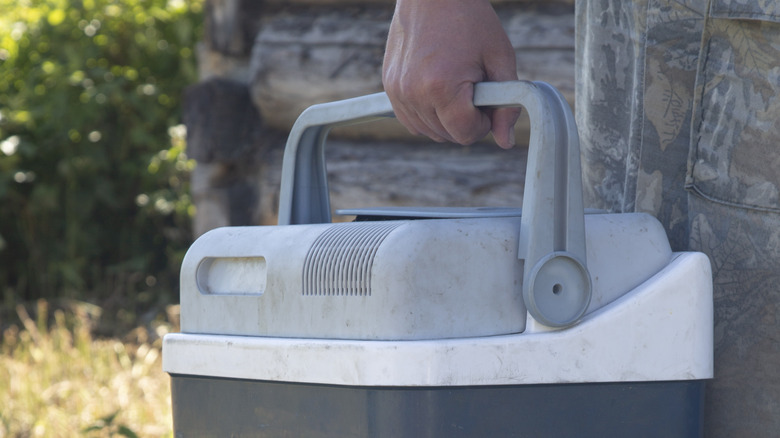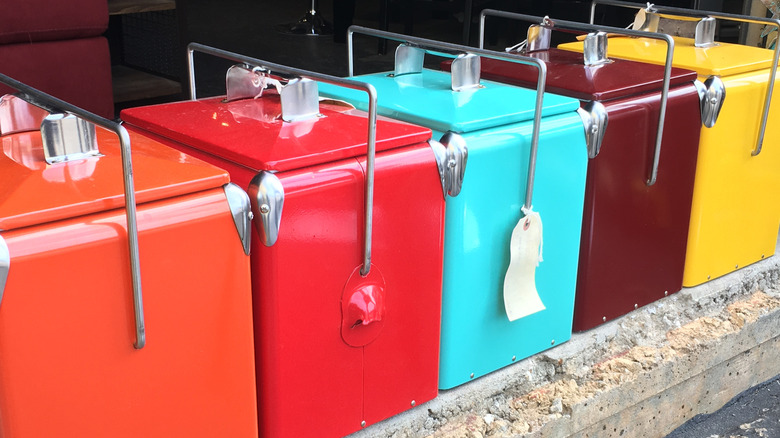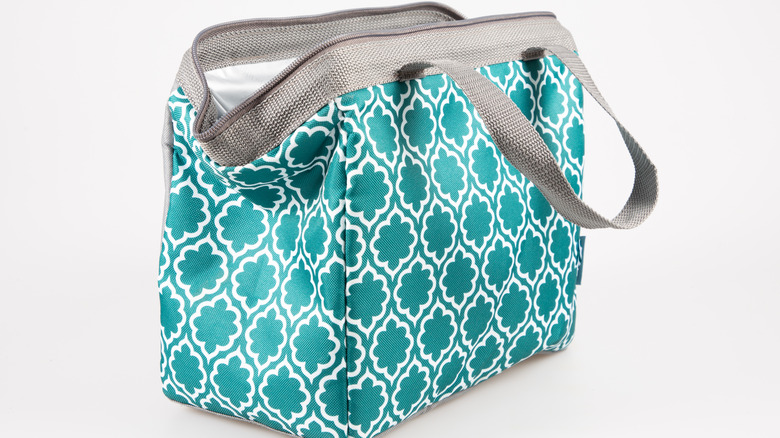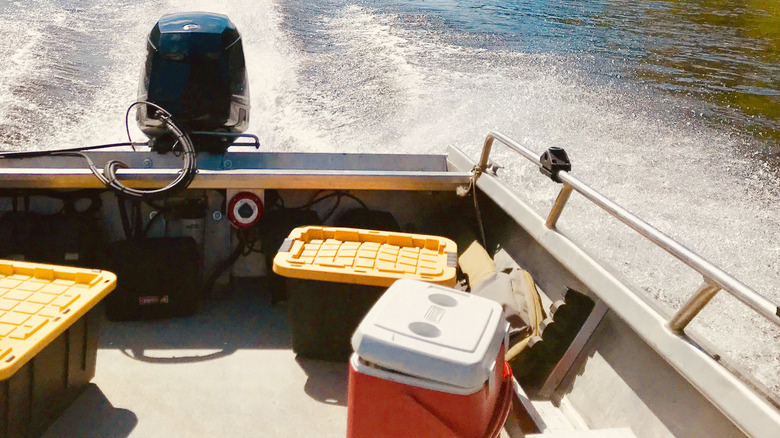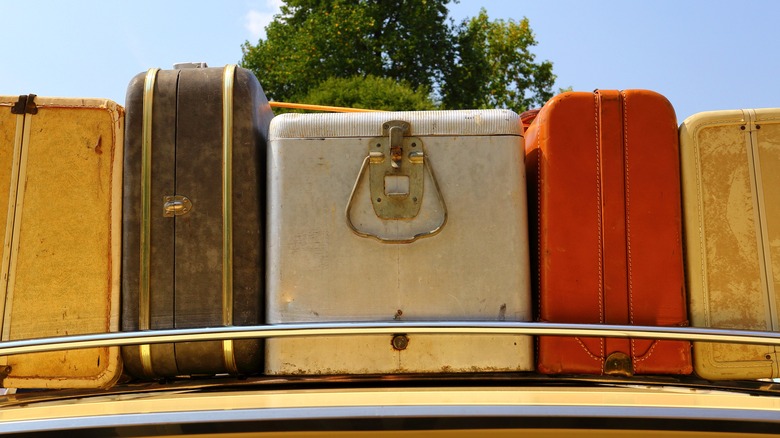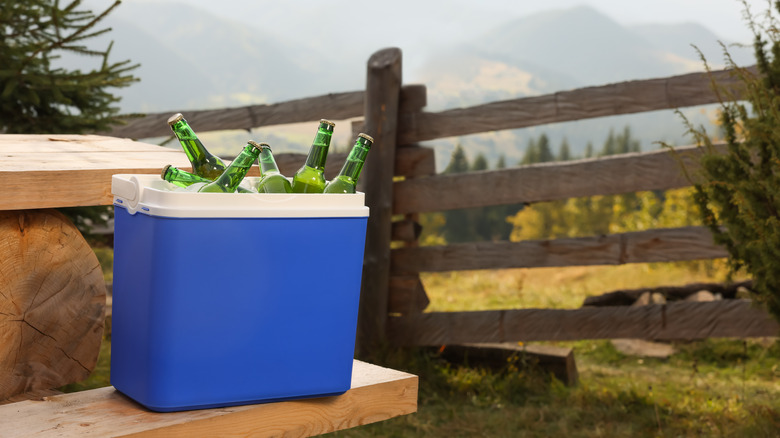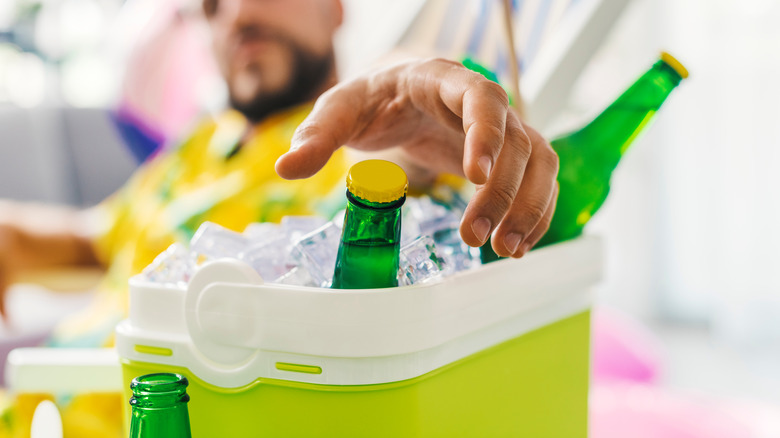Everything You Should Know Before Buying A Cooler
We have all kinds of recipes and advice for making the best food to take camping or on a picnic. All that information is useless, though, if you don't have the right cooler to haul it all in. Gone are the days of the only available option being simple, plastic hard-sided coolers. Recent updates and advances in technology have opened the door for a wide range of coolers to hit the market. Coolers tailored for sporting events, camping, days at the beach, or even just bringing your lunch to work line the shelves of stores and pages of online retailers everywhere.
All of this choice leaves you with a predicament. How to choose the right cooler? Hard-sided versus soft, wheels or carrying strap, large or small? The options are endless, but fear not. We are here to help you find the best cooler for any situation, budget, or style. Read on for help finding what's best for you and what you can leave behind.
Determine the locale for your cooler
Before you consider what type of cooler you need, think about where you intend to take it. Are you a sports fan looking to bring a bunch of snacks and drinks to a tailgate party? Or are you an outdoors enthusiast who plans to pack a cooler for multiday camping trips? Perhaps you are planning visits to the beach with your family and need a good, solid cooler that won't trap sand in all your packed sandwiches.
In any case, the locale matters, as coolers are specially designed to function in a wide range of situations and settings. Some are suited for multiple scenarios if you need your cooler to be versatile, while others are tailored for very specific locations and come with a host of special features to serve you. Think about which of these best applies to your life and where you plan to use a cooler.
Hard vs. soft coolers
One of the first and most important decisions about choosing a cooler is whether you need a hard-sided or soft-sided cooler. Each type of cooler has pros and cons that may or may not affect you and your purposes.
Hard-sided coolers are generally much larger and are better for situations where you need to keep food cold for a longer period of time, like camping overnight. Most hard-sided coolers are sturdy enough to act as a place to sit or a surface to set food or drinks on. This type of cooler protects the contents within from being smashed by other luggage, in addition to keeping the interior cold.
Soft-sided coolers have a different set of positives. This type of cooler is typically much lighter and meant to be carried. This can come in handy when crossing certain terrain, like a sandy beach. Soft-sided coolers are more comfortable to carry and can provide a bit of flexibility when being packed into a car.
What size cooler is right for you?
Size varies greatly when it comes to coolers, from tiny zip-up models designed to fit a sandwich and maybe a piece of fruit, to extra-large 150-quart behemoths meant to hold the drinks and ice for a large party or tailgate. For some, this aspect might come down to the size of your car, or even the trunk of the car. Unless you only ever plan to haul your cooler to the backyard, you will likely be putting the cooler in the back of your car at some point or another.
Size will determine many of the other factors of a cooler as well, such as weight, storage, and capacity. The size will also affect what can be stored inside.
For example, many people like using big, solid blocks of ice in their coolers when camping, as they melt far less quickly than cubed ice and can keep the interior cold for days, not hours. Some smaller-sized coolers won't fit these blocks, which are typically about the size of a cinder block.
Consider the weight
Some coolers are designed to be carried, and others come with wheels for pulling around. In either case, weight is going to be a major determining factor in your decision on a portable cooler. Even though all of these coolers are designed to be portable (otherwise you would just use a plug-in refrigerator, most likely), some will be so heavy once loaded down with ice and food or drinks that carrying may be impossible.
When looking at models of cooler, first check the weight of the cooler itself. Some portable coolers that are intended for carrying over a shoulder can weigh upward of 10 pounds before you even add anything inside. Unless you have been hitting the gym or are a champion weightlifter, odds are this type is going to be way too heavy to actually carry around once filled.
Make sure to check the empty weight of the cooler before purchasing to make sure you don't run into a tough situation.
Think about storage
Do you live in a large suburban home or a tiny walk-up apartment? Something many people forget to consider when picking out a cooler is where to put it when it's not in use.
The largest models of hard-sided coolers need a significant amount of space when not in use, though you can store things inside once emptied of ice. A certain amount of weight can be stacked on top, but that will vary based on the model, and you should check the manufacturer's instructions. Some soft-side coolers can pack up completely flat, while others are flexible but not enough to collapse completely.
Before you choose a cooler, assess your storage situation and determine the maximum size that you could possibly accommodate. Keep in mind that some coolers are durable enough to be stored outside, whereas others will need to be kept in a cool, dry, covered location to remain in optimal condition.
Durability
When thinking about shelling out upward of a few hundred dollars on a new cooler, you want to know that it will last. Durability factors into the decision process, as some coolers will need to be able to withstand the elements and (ideally) dozens of uses.
Durability tends to come diametrically opposite to cost, unfortunately, and cheaper coolers are more likely to break or puncture. That won't matter to the occasional user, but hardcore outdoorsmen won't be happy with these models.
The best way to determine long-term durability is to read user reviews. There, you will find unbiased information from actual people who own the product and how they were using the cooler if and when it broke. Perhaps a certain cooler doesn't stand up to multiple overnight camping trips, but you only plan to visit the local park occasionally. In that case, it may be worth it to you to save a few bucks and go for a slightly less durable model.
Day trip or overnight?
When choosing a cooler specifically for camping and sleeping out-of-doors, the length of the trip will determine the kind of cooler you need. After all, you don't want to wake up days away from civilization and find that all your ice melted overnight and your food went bad. In fact, multiday camping trips absolutely require a cooler that can keep food and ice cold for the duration of the trip, or else you will be left to survive off trail mix and beef jerky. This type must be large enough to hold at least one full block of ice, as well as a bag or two of ice cubes.
Day trips won't require such a lengthy amount of cold retention, but probably need to be a bit more lightweight and easy to carry to make packing up at the end of the day a short affair. Some coolers, like the 52-quart ultra-light cooler from RTIC, hit the perfect middle ground and will work well for either occasion.
Hand carry or shoulder strap?
Even though all portable coolers are — well, portable, the way they are carried varies. Large coolers often have two handles on either end so two people can lift and carry simultaneously, or feature large wheels on one end for pulling. Smaller, hard-sided coolers usually have a hinged or rotating handle that folds down when not in use and is meant to be carried in one hand.
On average, most people can only comfortably lift and carry around 10 pounds of weight in one hand (and definitely no more than 25 pounds), so smaller coolers are better for this carry style.
Some newer models of soft-sided coolers, such as the Hopper by Yeti, are designed to hold up to 26 pounds of ice and are fitted with backpack-style straps to make that kind of weight possible to carry. Some have a shoulder strap, or a combination of shoulder strap and hand-carry handles, to give you options when it comes to moving your cooler around.
Style is important
While the practical features or limitations of a cooler are ultimately of top priority, style matters, too. Luckily, most cooler manufacturers have caught onto this and have started offering models in a range of colors and designs.
Igloo has even debuted a "retro" line with all the colors and designs of classic '90s models paired with modern functionality. Igloo also has a cooler created in collaboration with the National Parks Conservation Association that showcases nature-friendly art emblazoned on the top.
Be it vintage, vibrant, or groovy, there is a color scheme and design for every kind of taste or style. There is even a kayak-shaped cooler designed to float behind your kayak with enough interior space to hold up to 15 cans, plus 10 pounds of ice. Fans of the '70s will love the psychedelic colors of Brumate's rolling cooler in berry swirl, which features oversized wheels and a self-tapping removable drink tank.
Compare price points of coolers
Once you have narrowed your search down to a few choices, it's all going to come down to cost. Small, hand-carry coolers designed for bringing lunch to work can be as cheap as $7 at Walmart, whereas supersized hard-sided coolers that can accommodate a party of a hundred people can easily go over $1,000. Consider your budget and decide which price point you fit into. Of course, larger coolers with more premium features are going to cost more, and smaller versions are typically less.
In most cases, similarly priced soft-sided coolers perform just as well, and the final determination comes down to comfort and storage. When it comes to hard-sided coolers, quality varies greatly, and the difference between coolers at different price points can mean ice stays cold for days instead of hours.
A higher-priced cooler with more premium insulation might be able to keep a smaller amount of ice colder for longer, meaning you can get away with an overall smaller cooler from the start.
Is the cooler waterproof?
Boaters, kayakers, and other water-faring individuals have an extra layer of choice in their coolers. Some, but not all, portable coolers are designed to be water-resistant, and some are completely watertight.
While making sure that no water or moisture gets out is an important feature in a cooler, you will also want to make sure no water can get in, especially in a scenario where ocean or lake water is splashing around and could contaminate a perfectly good pack of sandwiches.
Some coolers, like the ICEMULE soft-sided cooler, are completely waterproof, so you won't have to worry about the pack falling off the back of the boat and ruining your lunch. Others, like this model from TRC Recreation, are so waterproof they can actually float on the water, making them perfect for floating on a lazy river or chilling in the pool. A few options are resistant enough that a quick fall into some water won't damage the contents, but you don't want to leave it there for long.
Material matters
By and large, plastic dominates the cooler industry. Both the interior and exterior are almost always made of plastic, though the type can vary. The interior is some kind of insulation. According to Grizzly Coolers, "Cheaper hard coolers use Styrofoam (extruded polystyrene), while premium hard coolers like Grizzly or Kenai use heavier but more effective polyurethane." Yeti's soft-sided coolers are made of a waterproof fabric, though the company is vague about what exactly this fabric is made of.
The material used to manufacture the exterior makes a big difference as well. Most hard-sided coolers, Yeti models included, are made of some kind of plastic, with some higher-end models using a UV-resistant roto-molded polyethylene. Coleman has a line of Reunion coolers that feature a steel belting. Steel is super durable and rust-resistant, though may be heavier than some plastic counterparts.
The cheap-and-cheerful disposable Styrofoam coolers you used to see at the grocery store have been replaced by Igloo's new RECOOL biodegradable material, a mixture of recycled paper and alkyl ketene dimer.
Special features
There is a whole wide range of fun and innovative special features aimed at setting various coolers apart from their competitors. Everything from attached bottle openers to cup holders to reflective coating can help make the final determination in your quest for the perfect cooler. Sunjoy's 60-quart cooler features a built-in solar panel that can be used to recharge phones and other devices.
Some coolers have a handy basket that hangs from the top to separate dry goods from the wet environment of the ice-filled area. For those that might enter bear country, some coolers come with handy locks to keep critters out (and food in).
We haven't even gone into the world of plug-in coolers, which are sort of a middle category between true portable coolers and refrigerators. This type of cooler is designed for car camping and tailgating, and most can be plugged into a car's cigarette lighter.
Environmental concerns
One of the final factors that may influence your decision has to do with the environment, and our impact on it. Scroll through videos on YouTube of the Great Pacific Garbage Patch, and you will no doubt see a floating plastic cooler lid or Styrofoam container.
It's for that very reason that cooler giant Igloo stopped making their iconic, albeit wasteful, disposable Styrofoam cooler in exchange for one made of recycled materials. More and more, consumers are looking for ways to make purchases that are less impactful on the environment.
The most low-waste purchase is, of course, not to make one at all. If you have a perfectly good cooler that still functions, don't just throw it away in favor of a flashy new model. If you must make a purchase and want to do so with sensitivity to the environment, look for models made without Styrofoam or made with recycled plastic.
The takeaway
The bottom line is that there are hundreds of coolers on the market, and the best choice is going to be the one that works best for your lifestyle. Coolers are designed to suit a wide range of activities and lifestyles.
Make sure to be realistic about the kinds of places you might bring your cooler, if it ever even leaves your backyard. You don't want to find yourself shelling out a few hundred dollars for a cooler that can't even fit in the trunk of your car, for example.
Make sure to always follow safe food handling practices when using a cooler. Even the most pricey options can leave your food in the danger zone if you aren't careful. Check the temperature with a thermometer the first few times you use it until you get a sense of its capability. Keep the most perishable foods on the bottom closest to the ice and buy some accessory baskets to keep dry food separate from the ice, if needed.
